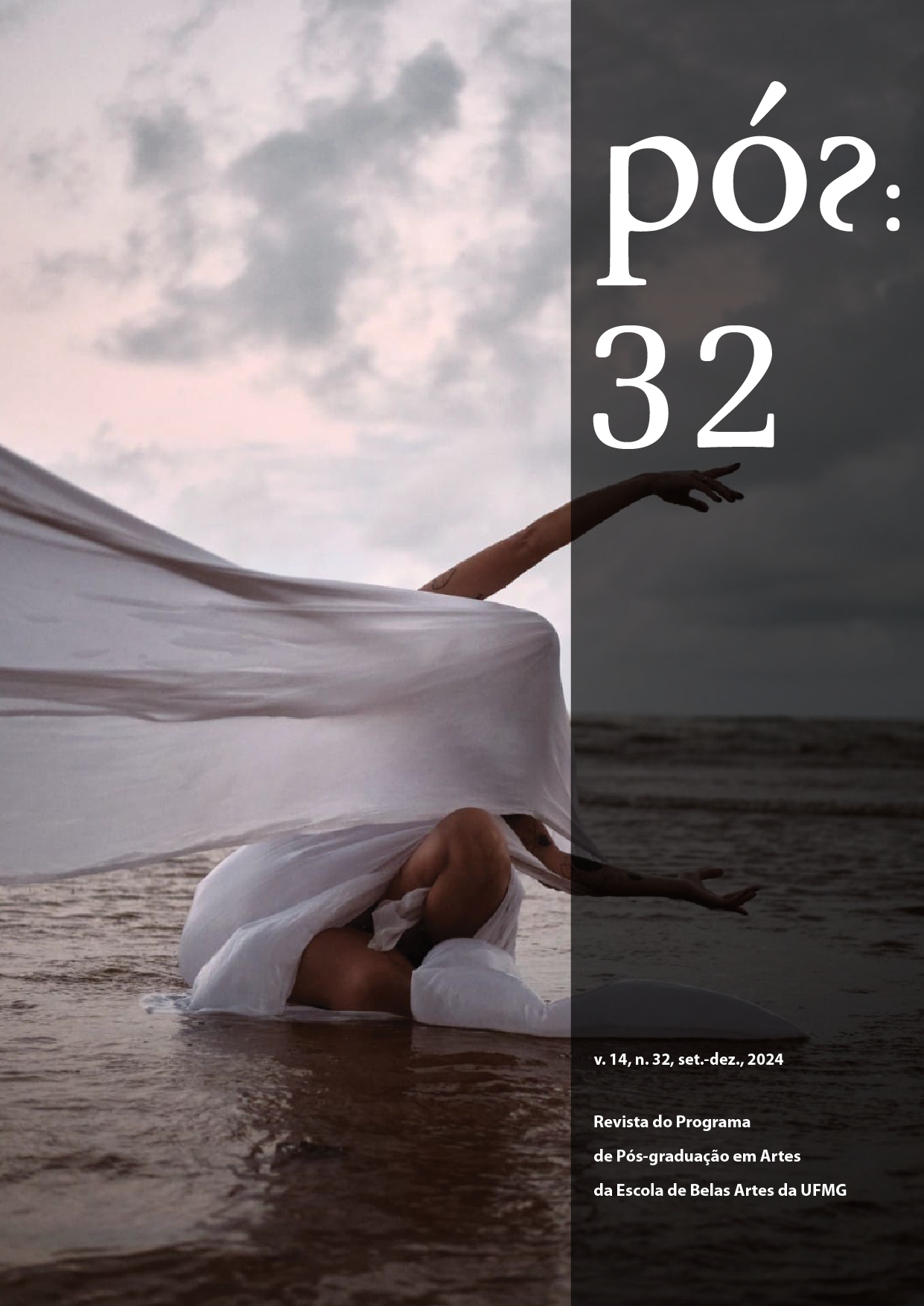Masking, Memory, and Affective Objects
A Cartography of Creation Processes
DOI:
https://doi.org/10.35699/2238-2046.2024.52654Keywords:
Masking, Scenic Poetics, Animation TheaterAbstract
This paper presents the cartography of a set of experimentation processes with mask and masking at the Animation Theater that, throughout the artist's trajectory, gradually
consolidate the inductors, principles and procedures of a poetics of affection, encounter,
intimacy, and celebration, grounded in the construction of a state of presence and permanence, induced by affective objects and memories, but also by the intimacy and
collaborativeness of the processes. The principles of becoming minor, expanded body, attentive body, state of presence, and state of permanence stand out. A creation machine is composed that operates when the performer's body engages in intimacy and celebration with other performers and with the spectator.
References
BORGES, J. O desenhador sem alarde. Zeco Pacha, Belém, 3 jan. 1960. Disponível em:
https://zecopacha.blogspot.com/. Acesso em: 23 abr. 2024.
CURTO, A. L. Índio, manual da saúde. Como: Grafiche Lambro, 1993.
DELEUZE, G.; GUATTARI, F. Mil Platôs: capitalismo e esquizofrenia. São Paulo: Editora 34, 2011. (v. 1).
Publicado originalmente em 1980.
KASTRUPP, V. O funcionamento da atenção no trabalho do cartógrafo. In: PASSOS, E.; KASTRUPP, V.;
ESCÓSSIA, L. da (org.). Pistas do método da cartografia: Pesquisa Intervenção e Produção de
Subjetividade. Porto Alegre: Sulina, 2009. p. 32-51.
PACHA, A. A procissão do corpo arte: um trajeto do encontro. In: ANDRADE, S. S.; JUNIOR, M. S. B.
(org.). Etnocenologia amazônica: corpo-encostado. Belém: Paka-Tatu, 2022. p. 235-248.
PASSOS, E.; KASTRUPP, V.; ESCÓSSIA, L. da (org.). Pistas do método da cartografia: Pesquisa
Intervenção e Produção de Subjetividade. Porto Alegre: Sulina, 2009.
SILVA, Cláudia do Socorro Gomes da. Estado de bonequice: entre a menina que engole lágrimas
pelos olhos e a mulher em fuga do hospital de bonecas. 2023. 98 f. Tese (Doutorado em Artes) –
Instituto de Ciências da Arte, Universidade Federal do Pará, Belém, 2023.
Downloads
Published
How to Cite
Issue
Section
License
Copyright (c) 2024 Larissa Latif, Anibal Pacha

This work is licensed under a Creative Commons Attribution-NonCommercial 4.0 International License.
Authors who publish in this journal agree to the following terms:
- Authors retain copyright and grant the journal the right of first publication, with the work simultaneously licensed under the a Creative Commons Attribution-NonCommercial 4.0 International License that permits sharing of the work with acknowledgement of authorship and initial publication in this journal;
- Authors are permitted to enter into additional contracts separately, for non-exclusive distribution of the version of the work published in this journal (e.g., the Creative Commons Attribution License).
- Authors are permitted and encouraged to publish and distribute their work online (e.g., in institutional repositories or on their home page) at any point before or during the editorial process, as this may generate productive changes as well as increase the impact and citation of the published work.
- It is the responsibility of the authors to obtain written permission to use in their articles materials protected by copyright law. Revista PÓS is not responsible for copyright breaches made by its contributors.












